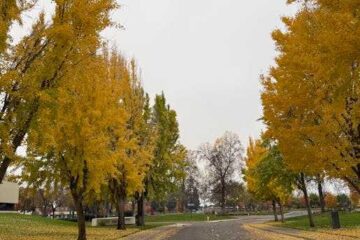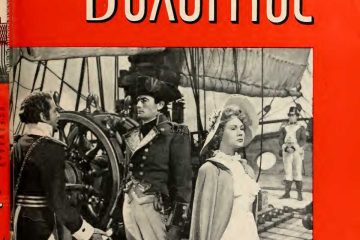The Modern Definition of Bridal: How Wedding Traditions Are Evolving

The Modern Definition of Bridal: How Wedding Traditions Are Evolving
The Modern Definition of Bridal: How Wedding Traditions Are Evolving
When we think of a traditional wedding, we often imagine a white dress, a church ceremony, and a grand reception. However, as times change, so do wedding traditions. The modern definition of bridal is evolving, with couples embracing new ideas, breaking old norms, and personalizing their special day in unique ways. In this article, we’ll explore how wedding traditions are changing, the factors driving this evolution, and what the modern definition of bridal looks like today.
The Evolution of Wedding Traditions
Wedding traditions have been around for centuries, with many of them rooted in cultural, religious, and societal norms. However, as society progresses and becomes more diverse, these traditions have started to shift and adapt to the changing times. Couples are now seeking ways to make their weddings more personalized, meaningful, and reflective of their values and beliefs.
One major shift in wedding traditions is the move away from traditional church ceremonies. While some couples still choose to have a religious ceremony, many are opting for non-traditional venues such as outdoor gardens, rustic barns, or even destination weddings in exotic locations. This change reflects a desire for more unique and personal wedding experiences that showcase the couple’s personalities and tastes.
In addition to changing ceremony venues, couples are also redefining the roles of the bridal party. Gone are the days of strictly adhering to the traditional bridal party structure of groomsmen and bridesmaids. Modern couples are now including friends and family members of any gender, age, or relationship to the couple, breaking away from traditional gender norms and celebrating diversity and inclusivity.
Another significant change in wedding traditions is the concept of bride-centric events, such as bachelorette parties and bridal showers. While these events were traditionally focused on the bride, many modern couples are choosing to have joint pre-wedding celebrations that include both partners. This shift represents a move towards equality and partnership in modern relationships, where both partners are equally involved in wedding planning and celebrations.
Factors Driving the Evolution of Wedding Traditions
Several factors are driving the evolution of wedding traditions in the modern era. One of the primary drivers is the desire for individuality and personalization. Couples today place a strong emphasis on expressing their unique love story, personalities, and values through their wedding ceremonies and celebrations. This focus on personalization has led to a departure from cookie-cutter wedding traditions and a move towards more customized and meaningful experiences.
Another factor influencing the evolution of wedding traditions is the increasing diversity and inclusivity in modern society. As societal norms and values continue to evolve, so do wedding traditions. Couples are now more open to embracing new ideas and breaking away from traditional norms in favor of celebrating diversity, equality, and love in all its forms.
Furthermore, the rise of social media and the internet has had a profound impact on how couples approach their weddings. With access to endless inspiration, ideas, and resources, couples are no longer confined to traditional wedding standards. They are empowered to explore and incorporate new trends, styles, and cultural influences, leading to a more diverse and dynamic wedding landscape.
The Modern Definition of Bridal
So, what does the modern definition of bridal look like today? In essence, it’s all about personalization, inclusivity, and breaking away from traditional norms. Modern bridal couples are rewriting the rules, redefining gender roles, and creating wedding experiences that are authentic, meaningful, and reflective of their love and partnership.
Personalization is at the heart of the modern definition of bridal. Couples are prioritizing their unique love story, interests, and cultural backgrounds, infusing their wedding ceremonies and celebrations with personal touches that resonate with their identities. From custom-designed invitations to non-traditional ceremony rituals, modern couples are putting their stamp on every aspect of their wedding day.
Inclusivity is another key aspect of the modern definition of bridal. Couples are embracing diversity in all its forms, including gender, sexuality, and cultural backgrounds. This is reflected in the way bridal parties are structured, the traditions that are incorporated, and the overall atmosphere of the wedding. The focus is on creating an inclusive and welcoming environment that celebrates the love and relationships of all individuals involved.
Breaking away from traditional norms is also a hallmark of the modern definition of bridal. Couples are rethinking age-old customs, such as the first dance, the bouquet toss, and the exchange of vows, and choosing to incorporate new elements that better reflect their values and beliefs. This can include anything from creating unique unity rituals to incorporating cultural traditions from both partners’ backgrounds.
Conclusion
The modern definition of bridal is continually evolving, reflecting the changing values, beliefs, and desires of couples in the 21st century. As wedding traditions continue to shift and adapt, one thing remains constant: the importance of personalization, inclusivity, and authenticity. Modern couples are rewriting the rules, creating wedding experiences that are as diverse and unique as their love stories.
As we look to the future, it’s clear that the modern definition of bridal will continue to evolve, incorporating new ideas, breaking old norms, and celebrating love in all its forms. Whether it’s through non-traditional venues, inclusive celebrations, or personalized rituals, the modern definition of bridal is a beautiful reflection of the diverse and dynamic relationships of today’s couples.




0 Comments